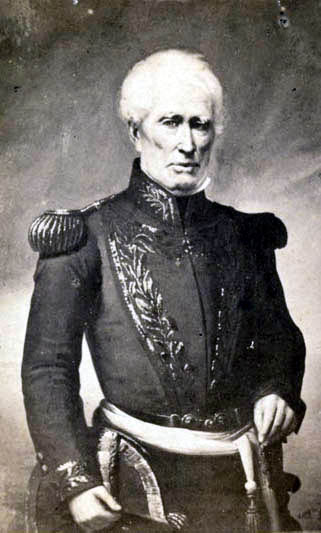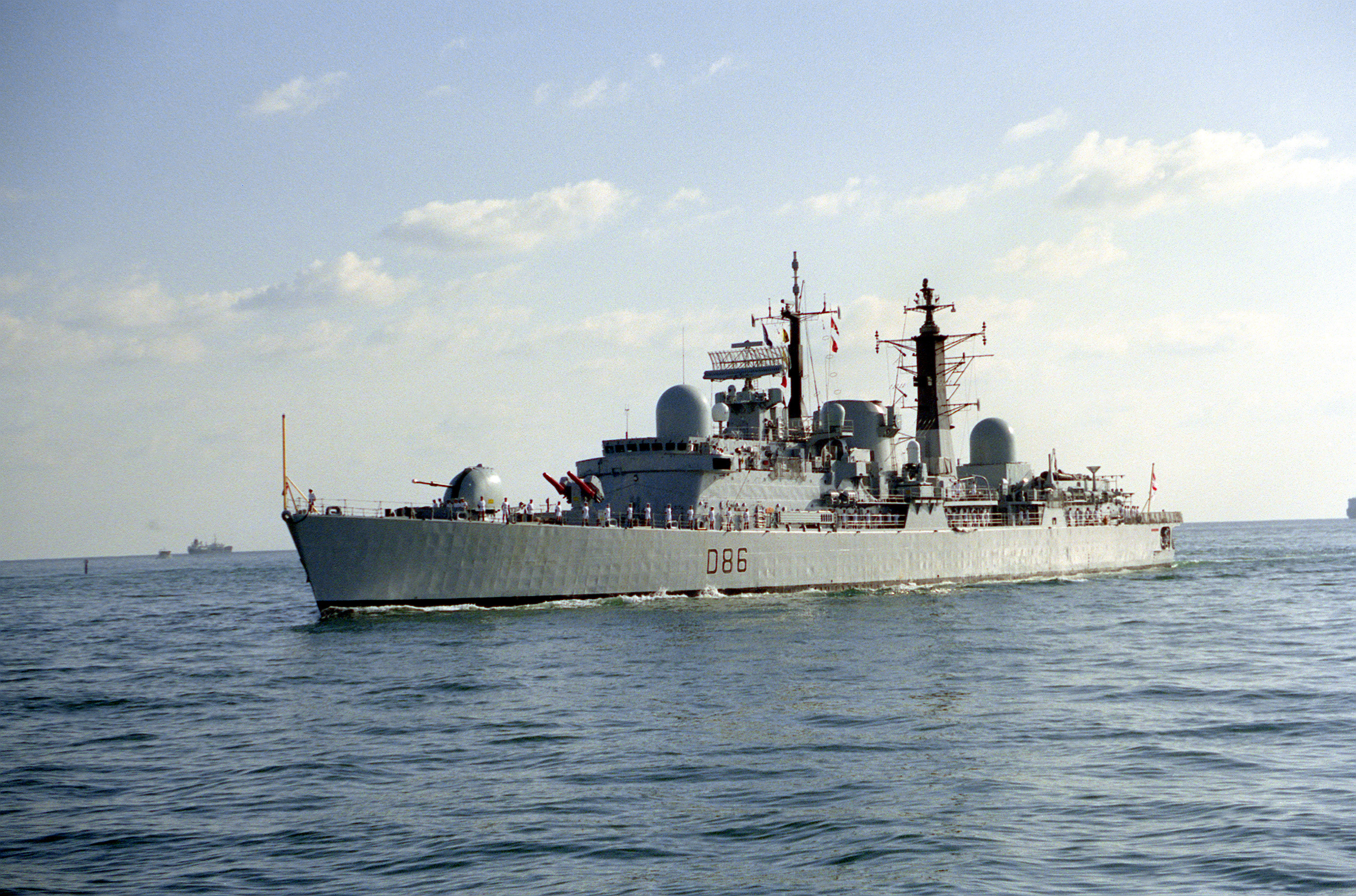|
ARA Santísima Trinidad (1974)
At least three ships of the Argentine Navy have been named ''Santísima Trinidad'', with or without the prefix ARA ( Armada República Argentina): * , a brigantine that participated in the Argentine War of Independence in 1814–16. She was commanded by Miguel Brown, and then by his brother Admiral William Brown. * , ex-, a patrol frigate of the U.S. which served in the Argentine Navy from 1948 to 1969. She was renamed ''Comodoro Augusto Lasserre'' (Q-9), when she became a survey ship in 1963. * , a Type 42 destroyer The Type 42 or ''Sheffield'' class was a class of fourteen guided-missile destroyers that served in the Royal Navy.Marriott, Leo: ''Royal Navy Destroyers since 1945'', , Ian Allan Ltd, 1989 A further two ships of this class were built for and ... in service 1981 to 1989, which participated in the Falklands War in 1982. See also * Santísima Trinidad (other) {{DEFAULTSORT:Santisima Trinidad, ARA Argentine Navy ship names ... [...More Info...] [...Related Items...] OR: [Wikipedia] [Google] [Baidu] |
Argentine Navy
The Argentine Navy (ARA; ). This forms the basis for the navy's ship prefix "ARA". is the navy of Argentina. It is one of the three branches of the Armed Forces of the Argentine Republic, together with the Argentine Army, Army and the Argentine Air Force, Air Force. The Navy Day#Argentina, Argentine Navy day is celebrated on May 17, anniversary of the victory in 1814 at the action of 14 May 1814, Battle of Montevideo over the Spanish fleet during the Argentine War of Independence, war of Independence. History 1810–1909 The Argentine Navy was created in the aftermath of the May Revolution of May 25, 1810, which started the Argentine War of Independence, war for independence from Spanish Empire, Spain. The navy was first created to support Manuel Belgrano in the Paraguay campaign, but those ships were sunk by ships from Montevideo, and did not take part in that conflict. Renewed conflicts with Montevideo led to the creation of a second fleet, which participated in the capture ... [...More Info...] [...Related Items...] OR: [Wikipedia] [Google] [Baidu] |
Brigantine
A brigantine is a two-masted sailing vessel with a fully square-rigged foremast and at least two sails on the main mast: a square topsail and a gaff sail mainsail (behind the mast). The main mast is the second and taller of the two masts. Older usages are looser; in addition to the rigorous definition above (attested from 1695), the ''Oxford English Dictionary'' includes two definitions: "a small vessel equipped both for sailing and rowing, swifter and more easily manœuvred than larger ships" and "(loosely) various kinds of foreign sailing and rowing vessels, as the galleon, galliot, etc." Modern American definitions include vessels without any square sail(s) on the main mast. Mediterranean brigantines In the Mediterranean Basin during the 13th century, a brigantine referred to a sail- and oar-driven war vessel. It was lateen rigged on two masts and had between eight and twelve oars on each side. Its speed, maneuverability, and ease of handling made it a favourite of Med ... [...More Info...] [...Related Items...] OR: [Wikipedia] [Google] [Baidu] |
Argentine War Of Independence
The Argentine War of Independence () was a secessionist civil war (until 1816) fought from 1810 to 1818 by Argentine patriotic forces under Manuel Belgrano, Juan José Castelli, Martín Miguel de Güemes, Martin Miguel de Guemes and José de San Martín against Royalist (Spanish American Revolution), royalist forces loyal to the Spanish Empire, Spanish crown. On July 9, 1816, an Congress of Tucumán, assembly met in San Miguel de Tucumán, Argentine Declaration of Independence, declaring independence with provisions for a Constitution of Argentina, national constitution. Background The territory of modern Argentina was part of the Spanish Viceroyalty of the Río de la Plata, with its capital city in Buenos Aires, seat of government of the Spanish viceroy. Modern Uruguay, Paraguay and Bolivia were also part of the viceroyalty, and began their push for autonomy during the conflict, becoming independent State (polity), states afterwards. The vast area of the territory and slow ... [...More Info...] [...Related Items...] OR: [Wikipedia] [Google] [Baidu] |
William Brown (admiral)
William Brown (also known in Spanish as Guillermo Brown or ''Almirante'' Brown) (22 June 1777 – 3 March 1857) was an Irish sailor, merchant, and naval commander who served in the Argentine Navy during the wars of the early 19th century. Brown's successes in the Argentine War of Independence, the Cisplatine War, and the Anglo-French blockade of the Río de la Plata earned the respect and appreciation of the Argentine people, and he is regarded as one of Argentina's national heroes. The creator and first admiral of the country's maritime forces, he is commonly known as the "father of the Argentine Navy". Early life Brown was born in Foxford, County Mayo, Ireland, on 22 June 1777. He emigrated with his father to Baltimore, Maryland in 1793. Probably, they went to Philadelphia, Pennsylvania. A short time after their arrival, the friend who had invited them and offered them food and hospitality died of yellow fever. Several days later, William's father also succumbed to the ... [...More Info...] [...Related Items...] OR: [Wikipedia] [Google] [Baidu] |
Frigate
A frigate () is a type of warship. In different eras, the roles and capabilities of ships classified as frigates have varied. The name frigate in the 17th to early 18th centuries was given to any full-rigged ship built for speed and maneuverability, intended to be used in scouting, escort and patrol roles. The term was applied loosely to ships varying greatly in design. In the second quarter of the 18th century, what is now generally regarded as the 'true frigate' was developed in France. This type of vessel was characterised by possessing only one armed deck, with an unarmed deck below it used for berthing the crew. Late in the 19th century (British and French prototypes were constructed in 1858), a type of powerful ironclad warships was developed, and because they had a single gun deck, the term 'frigate' was used to describe them. Later developments in ironclad ships rendered the 'frigate' designation obsolete and the term fell out of favour. During the Second World War ... [...More Info...] [...Related Items...] OR: [Wikipedia] [Google] [Baidu] |
Survey Ship
A survey vessel is any type of ship or boat that is used for underwater surveys, usually to collect data for mapping or planning underwater construction or mineral extraction. It is a type of research vessel, and may be designed for the purpose, modified for the purpose or temporarily put into the service as a vessel of opportunity, and may be crewed, remotely operated, or autonomous. The size and equipment vary to suit the task and availability. Role The task of survey vessels is to map the bottom, and measure the characteristics of the benthic zone, full water column, and surface for the purpose of: * hydrography, the measurement and description of the physical features of oceans and other natural bodies of water, and the prediction of their change over time, for the primary purpose of safety of navigation and in support of other activities associated with those bodies of water, * general oceanography, the scientific study of the oceans, * mapping of marine habitats as ... [...More Info...] [...Related Items...] OR: [Wikipedia] [Google] [Baidu] |
Type 42 Destroyer
The Type 42 or ''Sheffield'' class was a class of fourteen guided-missile destroyers that served in the Royal Navy.Marriott, Leo: ''Royal Navy Destroyers since 1945'', , Ian Allan Ltd, 1989 A further two ships of this class were built for and served with the Argentine Navy. The first ship of the class was ordered in 1968 and launched in 1971. Two of the class (''Sheffield'' and ''Coventry'') were lost to enemy action during the Falklands War of 1982. The Royal Navy used this class of destroyer for 38 years between 1975 and 2013. No ships of this class remain active in the Royal Navy and both have also been retired from the Argentine Navy. The Royal Navy has replaced them with Type 45 destroyers. History The class was designed in the late 1960s to provide fleet area air defence. In total fourteen vessels were constructed in three batches. In addition to the Royal Navy ships, two more ships were built to the same specifications as the Batch 1 vessels for the Argentine Navy. ... [...More Info...] [...Related Items...] OR: [Wikipedia] [Google] [Baidu] |
Santísima Trinidad (other)
Santisima Trinidad (meaning ''Most Holy Trinity'' in Spanish) may refer to: Places * Santísima Trinidad (fort), a fortress that once existed on the Bio Bio River in Bio Bío province, Chile * Santísima Trinidad (Asunción), a barrio (district) in Asunción, Paraguay and home of the football club Sportivo Trinidense * La Santísima Trinidad de Paraná, a former Jesuit mission in Paraguay * Santisima Trinidad (Taiwan), a Spanish settlement from 1626 to 1642 on the island of Formosa Ships * One of several Spanish ships including: ** , a 400-ton galleon, which escaped when Panama City was attacked in 1671 and was later captured by English buccaneers ** – largest of the Manila galleons; officially named ''Santísima Trinidad y Nuestra Señora del Buen Fin'', captured by the British in 1762 ** , world's largest warship in its time, until it sank after the Battle of Trafalgar (1805) * One of several Argentine warships including: ** , a brigantine of the Independence Wars era ** ... [...More Info...] [...Related Items...] OR: [Wikipedia] [Google] [Baidu] |





